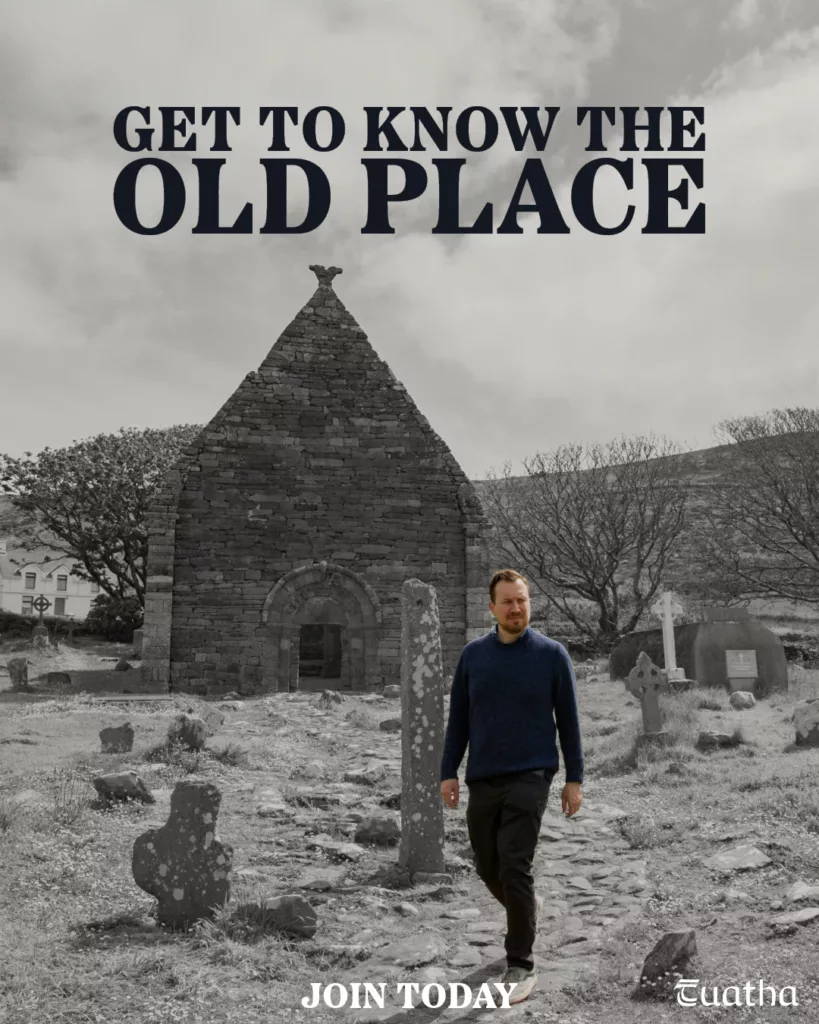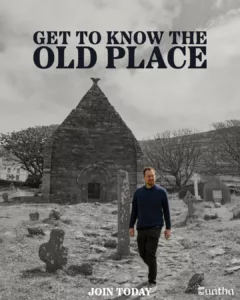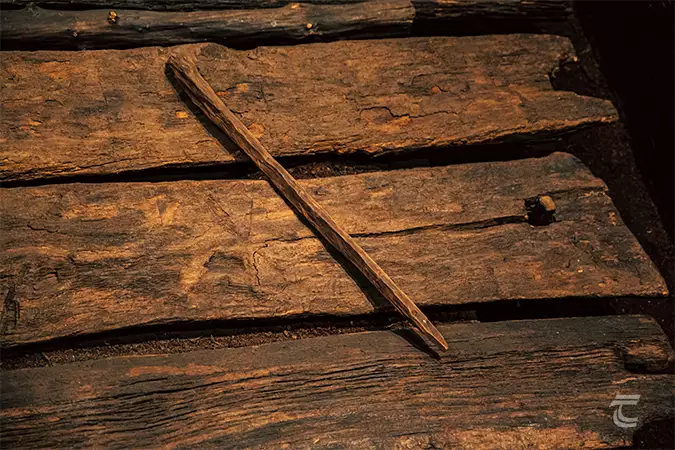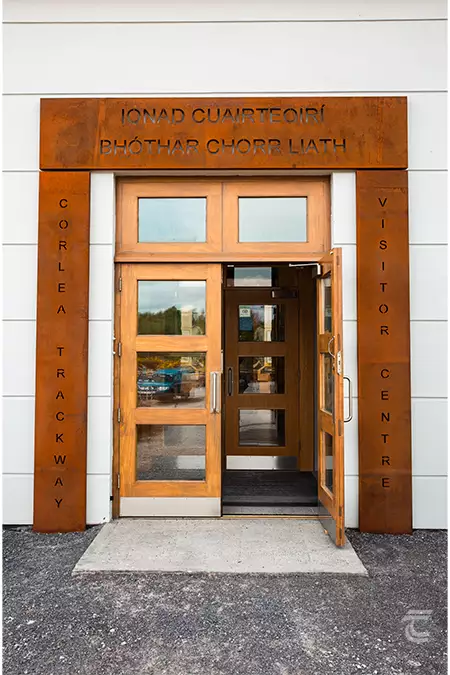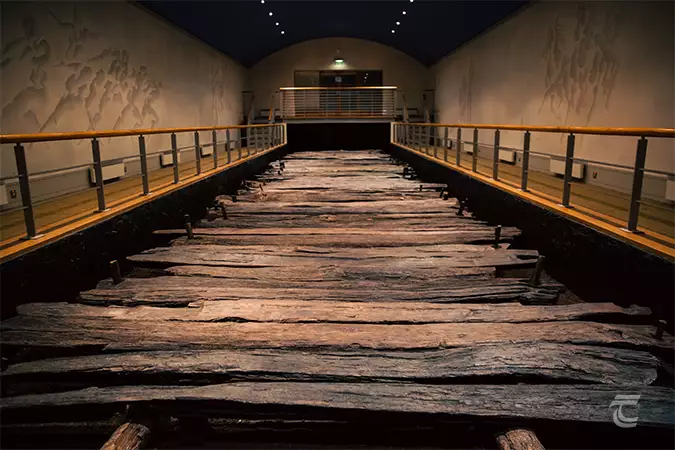The Corlea Trackway
Ireland’s bogs have always had a sense of otherworldliness. They often formed the natural boundaries and borders between ancient kingdoms, and were seen as ‘liminal’ spaces where the natural order of things was different and occasionally dangerous. Archaeological and accidental discoveries over the years of votive offerings, including human remains, has reinforced the otherworldly aspect in the national consciousness. However, somewhat paradoxically, bogs have also had an entirely practical aspect to Irish lives over the centuries. Though today they are chiefly exploited for peat-turf fuel, in the past they would have been hunting grounds for wildfowl, places noted for their preservative qualities for goods like butter, and important sources of useful plants and building materials like reeds for thatch, and more.
However, the bogs were, and still are, undoubtedly highly dangerous to traverse without proper roads. From the time of the earliest settlements in Ireland to the present day, the difficulty of constructing safe routes through the bog has challenged communities. One of the most remarkable solutions is the Corlea Trackway. This trackway (also known as a togher) is over 2,000 years old, dating to 148 BC. It was made of oak planks laid transversely on large parallel runners that were laid lengthways. It stretched for over 2km (1.25 miles), crossing into the neighbouring townland of Derraghan.
For practical information about visiting this site Click Here
Ireland’s bogs have always had a sense of otherworldliness. They often formed the natural boundaries and borders between ancient kingdoms, and were seen as ‘liminal’ spaces where the natural order of things was different and occasionally dangerous. Archaeological and accidental discoveries over the years of votive offerings, including human remains, has reinforced the otherworldly aspect in the national consciousness. However, somewhat paradoxically, bogs have also had an entirely practical aspect to Irish lives over the centuries. Though today they are chiefly exploited for peat-turf fuel, in the past they would have been hunting grounds for wildfowl, places noted for their preservative qualities for goods like butter, and important sources of useful plants and building materials like reeds for thatch, and more.
However, the bogs were, and still are, undoubtedly highly dangerous to traverse without proper roads. From the time of the earliest settlements in Ireland to the present day, the difficulty of constructing safe routes through the bog has challenged communities. One of the most remarkable solutions is the Corlea Trackway. This trackway (also known as a togher) is over 2,000 years old, dating to 148 BC. It was made of oak planks laid transversely on large parallel runners that were laid lengthways. It stretched for over 2km (1.25 miles), crossing into the neighbouring townland of Derraghan.
For practical information about visiting this site Click Here
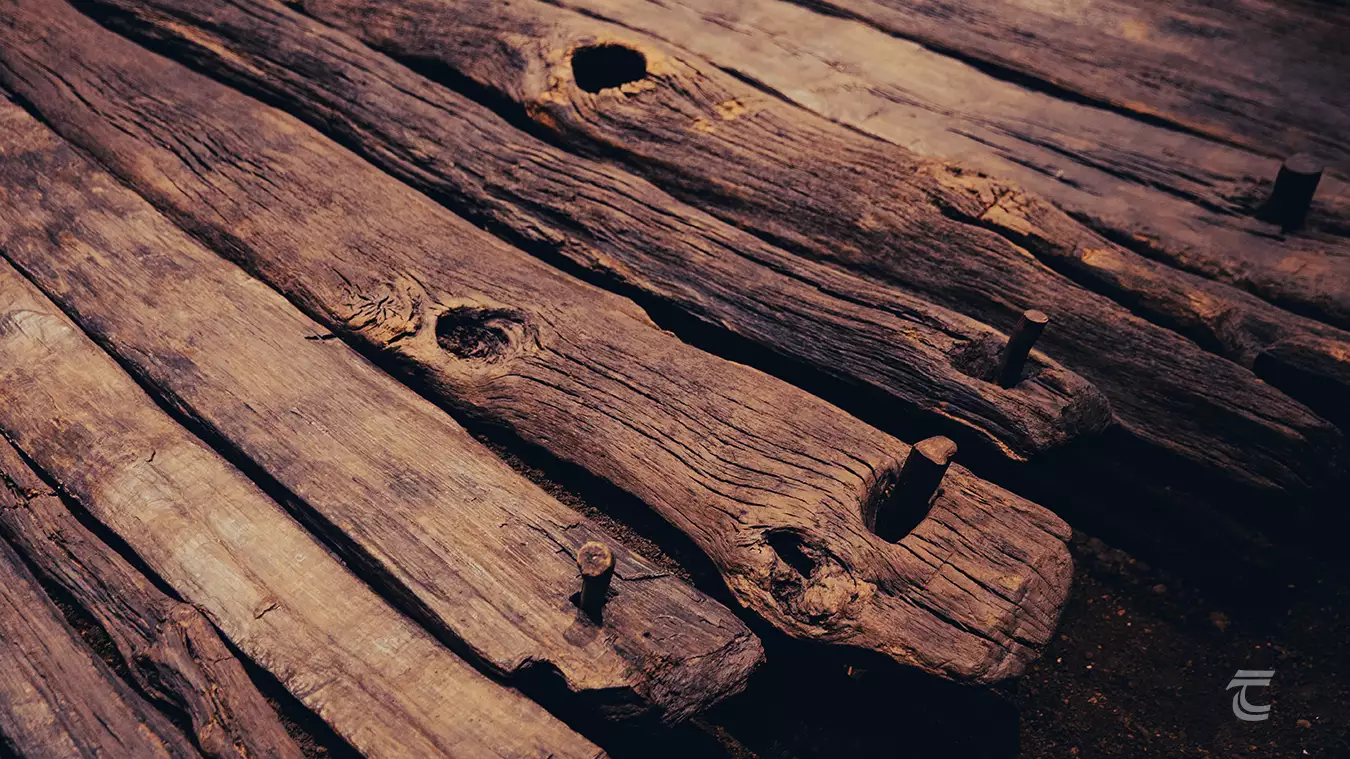
The 2000-year-old oak planks of the Corlea Trackway • Longford
The Excavation of the Corlea Trackway
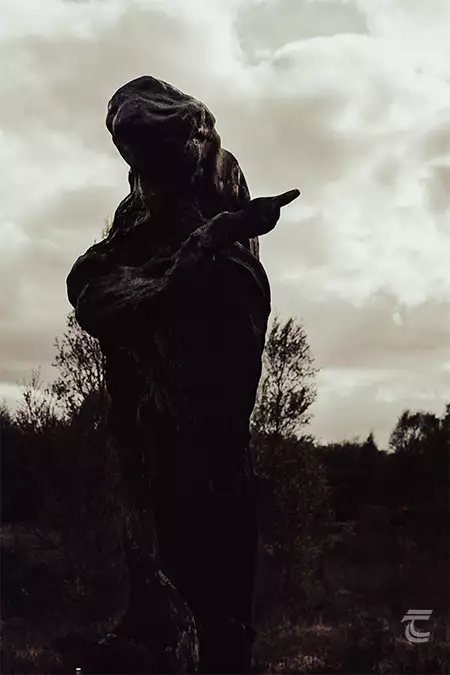
A haunting bog oak sculpture outside the Corlea Trackway Visitor Centre • Longford
The Corlea Trackway was excavated by Professor Barry Raftery in 1984, and was found to be the widest trackway yet discovered. Intriguing evidence of the people who built it was also identified by the archaeologists: a number of tub-shaped wooden containers were found, perhaps the refuse of prehistoric packed lunches! A large section of the trackway from Cloonbreany Townland was excavated and conserved, and is now on display in the excellent Corlea Trackway Visitor Centre, which was constructed on the exact axis of the trackway. Looking at the beautifully preserved trackway, it is impossible to prevent yourself wondering about whose feet may have trod those same planks 2,000 years earlier. For more on the Corlea Trackway and the incredible archaeology of Irish bogs, tune into this episode of the Amplify Archaeology Podcast for a fascinating discussion with wetland experts Cathy Moore and Ben Gearey.

A haunting bog oak sculpture outside the Corlea Trackway Visitor Centre • Longford
Upper left: a preserved wooden stake on the trackway • Lower left: the Corlea Trackway • Right: entrance into the Corlea Trackway Visitor Centre
Top: a preserved wooden stake on the trackway • Middle: entrance into the Corlea Trackway Visitor Centre • Bottom: the Corlea Trackway
The Corlea Trackway Visitor Information
Walk in the footsteps of Ireland’s prehistoric peoples in the incredible bogland landscape at Corlea in County Longford.
